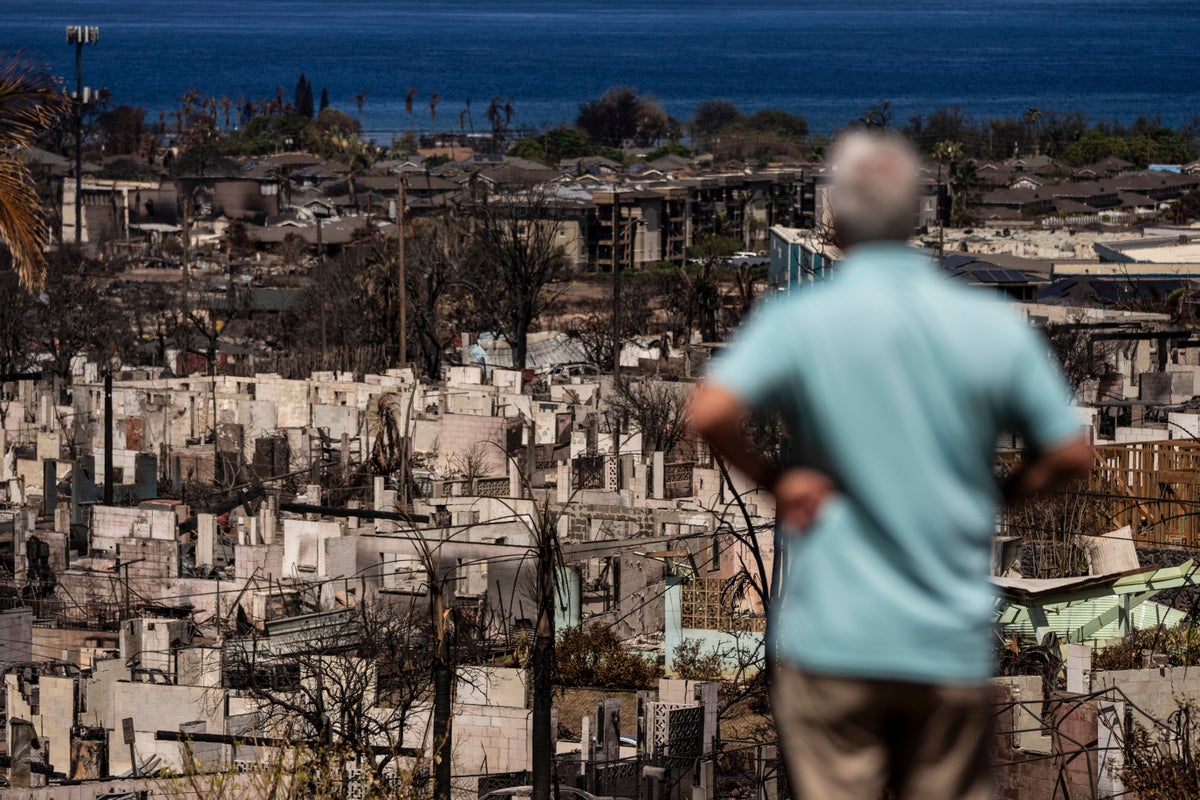
Maui County has taken legal action against the Hawaiian Electric Company by alleging negligence on the latter’s part for failing to cut off power amid extreme winds and dry conditions that occurred before catastrophic fires ravaged Lahaina.
The fires that began on 8 August burnt down the historic city with at least 115 people confirmed dead and numerous others still missing. The incident marked the deadliest set of fires in the US in over a century.
Accounts from witnesses and video footage showed sparks originating from power lines could have ignited the fires as utility poles snapped under the force of high winds generated by a passing hurricane.
The lawsuit filed on Thursday said the destruction could have been avoided and that the utility had a duty “to properly maintain and repair the electric transmission lines, and other equipment including utility poles associated with their transmission of electricity, and to keep vegetation properly trimmed and maintained so as to prevent contact with overhead power lines and other electric equipment”.
The utility knew that high winds “would topple power poles, knock down power lines, and ignite vegetation,” the lawsuit said.
“Defendants also knew that if their overhead electrical equipment ignited a fire, it would spread at a critically rapid rate.”
Hawaiian Electric said it is “very disappointed that Maui County chose this litigious path while the investigation is still unfolding”.
“Our primary focus in the wake of this unimaginable tragedy has been to do everything we can to support not just the people of Maui, but also Maui County,” Hawaiian Electric’s statement said.
The lawsuit noted that other utilities, such as Southern California Edison Company, Pacific Gas & Electric and San Diego Gas & Electric, have procedures for shutting off power during bad windstorms and said the “severe and catastrophic losses... could have easily been prevented” if Hawaiian Electric had a similar shutoff plan.
While the electric company was already facing public scrutiny, there were several other factors that added to the devastation. A prolonged drought in the area had left plant life, including invasive grasses, highly susceptible to ignition.
As Hurricane Dora passed offshore, winds toppled around 30 power poles in West Maui. Video evidence captured a downed power line igniting dry grass, initiating the fires. Initial efforts by firefighters contained the blaze, but subsequent rekindling and winds drove the fire toward downtown Lahaina.
As the fire raged, traffic came to a halt along Lahaina’s Front Street due to downed power lines and roadblocks set up by authorities. Panicked residents attempted to escape the encroaching flames and thick smoke, some even leaping into the water to avoid the danger.
Search teams, including snorkel-equipped individuals, have been scouring a stretch of water measuring 6.4km for signs of more dead bodies, while painstaking efforts to locate remains among the rubble of destroyed buildings are underway.
The lawsuit seeks compensation for public property and resources that were damaged in Lahaina and the adjacent Kula area.
Hawaiian Electric, a publicly traded utility responsible for serving 95 per cent of Hawaii’s electric customers, is facing multiple legal actions, including suits from Lahaina residents and its own investors alleging inadequate wildfire prevention measures and fraud.
Additional reporting by agencies







